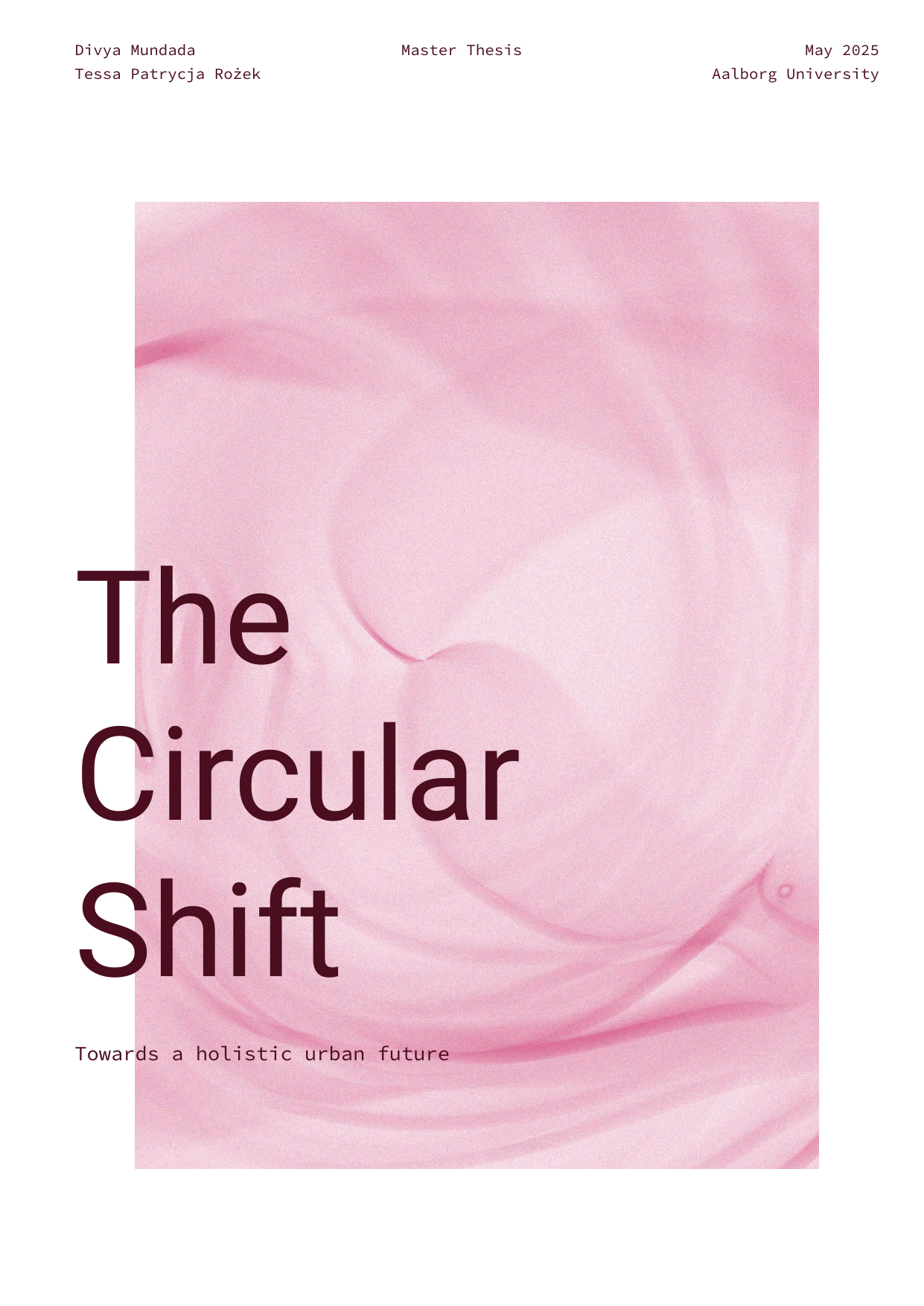
The Circular Shift - Towards a holistic urban future
Authors
Term
4. term
Education
Publication year
2025
Submitted on
2025-05-27
Pages
111
Abstract
Climate change and rapid urbanization demand a fundamental shift in the way we design and transform our urban environments. The building and construction sector remains a major contributor to global carbon emissions (United Nations Environment Programme and Global Alliance for Buildings and Construction, 2025), while demolition-led renewal strategies in socially vulnerable areas often undermine both climate goals and community well-being. This thesis investigates how the Danish social housing area of Toveshøj, located in the Brabrand district of Aarhus, can be transformed into a circular and socially sustainable neighborhood without relying on demolition. By integrating the theoretical concepts of Circular Economy (CE), Social Sustainability, and Design for Disassembly (DfD), the study proposes a holistic design framework that addresses both environmental and social dimensions of urban transformation. The research identifies the challenges and potentials of the Toveshøj area through spatial, social, and material analysis, revealing opportunities for reuse, micro-climate adaptation, and community-centered public space design. The resulting design proposal envisions Toveshøj as a regenerative neighborhood, where material flows, social interaction, and ecological resilience are interlinked. New housing typologies, multifunctional public spaces, and enhanced mobility networks are introduced to strengthen neighborhood identity and foster local circular practices. Common areas are reprogrammed to serve as social anchors that support well-being, learning, and biodiversity. Ultimately, the thesis positions Toveshøj as a pioneering model for circularity at a neighborhood-scale by demonstrating how sustainable transformation can be achieved through inclusive, adaptive, and non-destructive design interventions that benefit both human and non-human life.
Keywords
Documents
